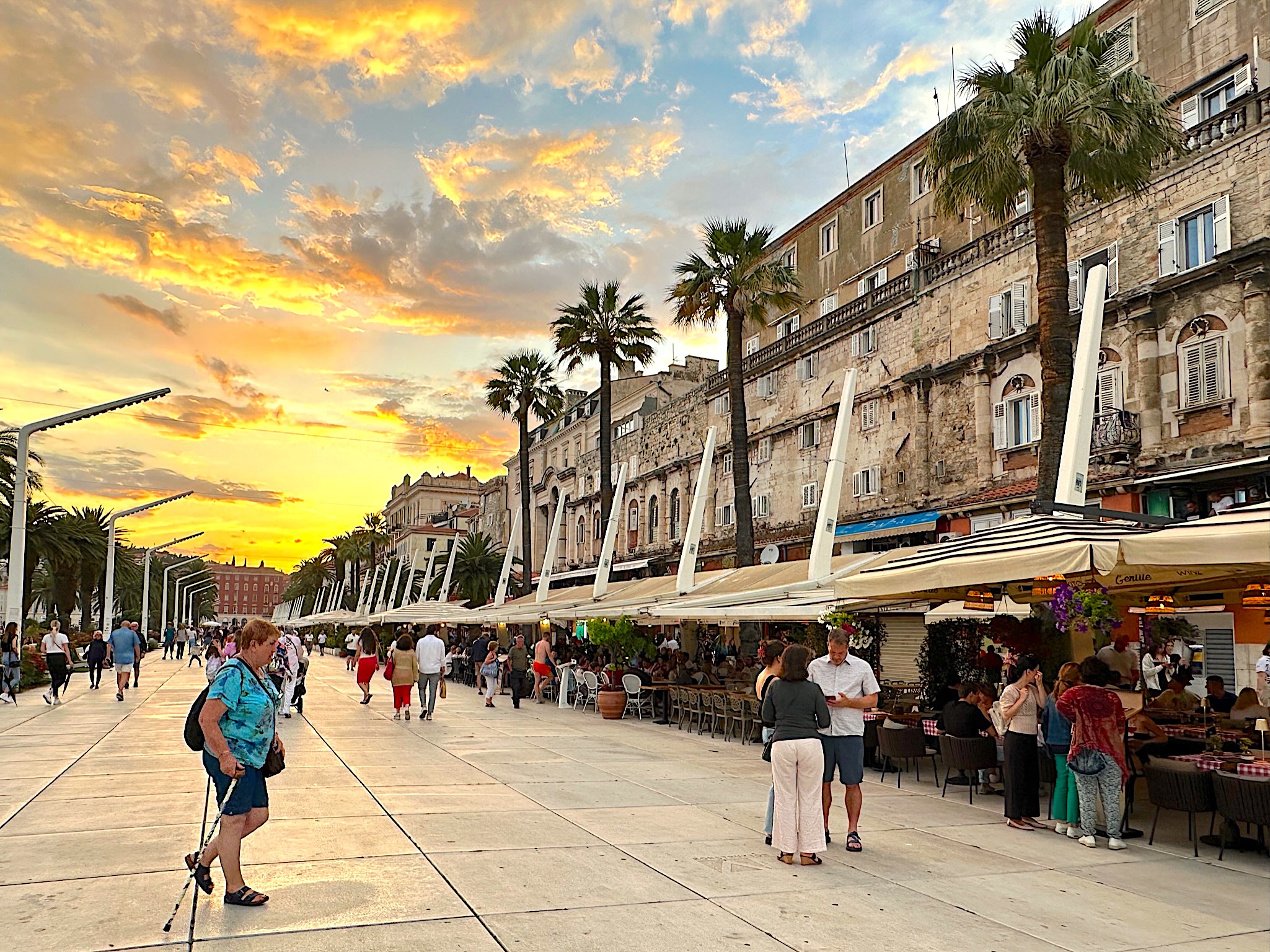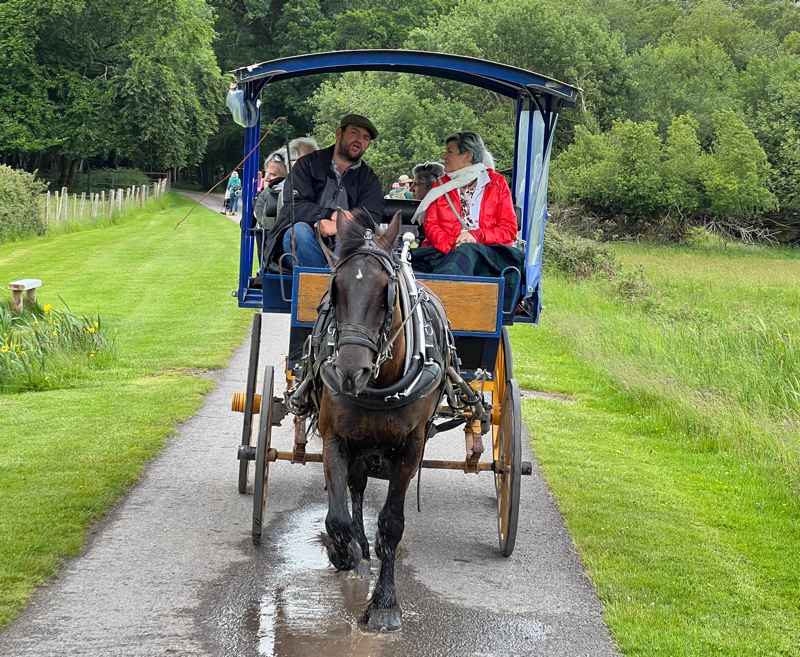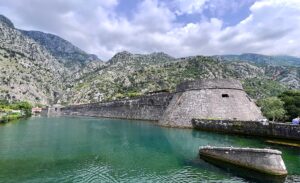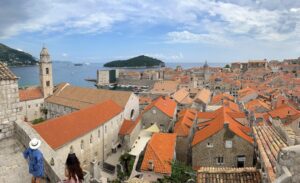Greetings, fellow wanderers! Join me on an unforgettable journey to the picturesque city of Split, Croatia. We embark on an adventure along the enchanting waterfront promenade, delve into the magnificence of Diocletian’s Palace, discover artistic treasures at the Meštrović Gallery, and savor a delectable evening meal atop the palace walls, overlooking the mesmerizing waterfront.


Our grand tour begins with a leisurely stroll along the sun-kissed waterfront promenade of Split. The gentle sea breeze rustles through palm trees, and the crystal-clear Adriatic Sea glistens in the sunlight. The promenade bustles with life – locals enjoying their coffee, artisans showcasing their crafts, and travelers like us soaking in the vibrant atmosphere. Cafes line the promenade, offering a perfect spot to dine on Croatian specialties while gazing at the sailboats gently bobbing in the harbor.

We step back in time as we explore the heart of Split – Diocletian’s Palace. Built by the Roman Emperor Diocletian at the turn of the 4th century AD, this sprawling complex was originally intended to be both a luxurious residence for the retired emperor and a fortified military camp. The palace’s strategic location on the shores of the Adriatic Sea also made it a crucial point of defense against potential invaders. This UNESCO World Heritage site is not just a palace; it’s an entire city within the city. The massive limestone walls and intricate architecture transport us to the days of the Roman Empire.







The underground level of Diocletian’s Palace in is a fascinating and mysterious part of this ancient architectural marvel. The underground level served several purposes during its long history. Initially, it was designed as a supporting structure for the palace above, providing stability and a foundation for the emperor’s lavish residence. It also housed the palace’s plumbing and heating systems, including the hypocaust, a Roman underfloor heating system.

Additionally, this space was used for storage, workshops, and as living quarters for servants and slaves. The underground chambers are a network of interconnected rooms and passageways, characterized by their massive stone walls and vaulted ceilings. The use of stone and bricks in their construction has contributed to their remarkable preservation over the centuries. The ceilings are particularly impressive, showcasing intricate stone arches and domes.









The lighting is dim and the air carries a cool, almost mystical atmosphere. This, combined with the ancient stone surroundings, creates a unique and somewhat eerie ambiance that adds to the intrigue of the space. Some sections are used as art galleries and exhibition spaces, showcasing both contemporary and historical art. Others house souvenir shops and small cafes, where you can take a break and absorb the surroundings.

We then wander through the palace’s maze of streets, stumbling upon hidden squares, charming boutiques, and inviting cafes.



The Peristyle, the central square of the palace, is a true masterpiece. The grandeur of the ancient columns and the awe-inspiring Egyptian sphinx are testaments to the rich history of this place.





You might even encounter Roman guards– actually actors– who might randomly chose and challenge a tourist to a duel.


As we explore further, we find unexpected treasures around every corner – from small chapels echoing with history to the bustling Market Hall, where the scent of fresh produce fills the air.

To learn more about Split’s cultural history, we visited the Meštrović Gallery, named after its founder, Ivan Meštrović, one of the most prominent Croatian sculptors and artists of the 20th century. This gallery is a must-visit for art enthusiasts, history buffs, and anyone seeking to explore Croatia’s rich artistic heritage.


The Meštrović Gallery is located in a stunning villa that Meštrović himself designed as a family residence. The villa, known as Kaštelet-Crikvine, is a work of art in its own right, showcasing a blend of Mediterranean and modernist architectural styles. It’s situated in the lush surroundings of Marjan Hill, providing a waterfront picturesque backdrop for the gallery’s exhibitions.

Ivan Meštrović was born in 1883 in what is now modern-day Croatia. He gained international recognition for his sculpting prowess and his contributions to the world of fine arts. The gallery houses an extensive collection of Meštrović’s works, including sculptures, drawings, paintings, and architectural designs. It’s a place where visitors can gain a deeper understanding of Croatia’s artistic heritage and appreciate the significance of Meštrović’s contributions to the world of art.



Our adventure concludes on a high note, quite literally. Picture this: an evening dining experience at a restaurant perched high on the palace walls, offering panoramic views of the waterfront.



As twilight creates an iridescent blue sky, we settle in for an unforgettable meal. The menu showcases the finest of Dalmatian cuisine – from smooth wine and succulent seafood, to savory beef and sweet desserts. Each bite is a celebration of flavors, a symphony of tastes that resonate with the history and culture of the region.




Split is a lively coastal city that combines ancient history with contemporary living. Its vibrant cultural scene, breathtaking waterfront, and inviting Mediterranean ambiance make it an alluring destination for travelers worldwide.





